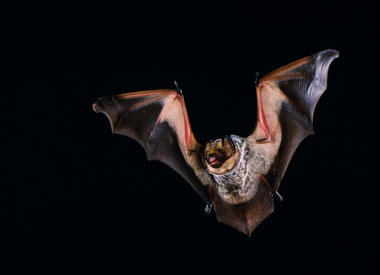Be Informed
Sign up for Sépaq emails to be the first to find out about our promotions, news and special offers.
Having extensive knowledge of the parks to better preserve them is the foundation that justifies the efforts invested in inventories, monitoring programs and scientific research. At Parc national du Mont-Orford, several initiatives have been put forward to limit environmental impacts that activities could have on the natural environment. The Crêtes, Mont-Chauve, Ruisseau-David, Ruisseau-des-Chênes, Pic-aux-Corbeaux and Pékan trails was therefore completely redesigned to sustainably support a growing number of hikers.
In addition to monitoring infrastructures, the plants and animals are also monitored to gain knowledge about the populations and the impact of recreational activities on them. The monitoring of nesting patterns of the Peregrine Falcon (Falco peregrinus anatum) on Pic aux Corbeaux, the Great Blue Heron (Ardea herodias) on Étang de la Cuvette, and the Common Loon (Gavia immer) on Étang aux Cerises are some of the projects conducted annually.
Find out more about scientific research in the Québec's National Parks network
In 1998, a bat inventory was carried out at Parc national du Mont-Orford. We learned that seven of Québec’s eight bat species were denizens of the park. What a natural treasure! Since then, a landmark event has shaken the peaceful life of these small flying mammals: the unfortunate arrival in North America (2006) of a foreign microscopic fungus at the origin of the white-nose syndrome. It's especially notorious for its detrimental effect on the populations of hibernating bats. Given the drastic decline of certain bat populations in the Eastern Townships, particularly the eastern pipistrelle, we were very interested to discover the impact of this significant decline of the populations in our protected territory.

Hoary bat
Photo credit: Merlin Tuttle's Bat Conservation
During the summer of 2016, a specialized firm was commissioned to carry out an acoustic inventory of the park’s bat population. As is the case for birds and frogs, one can identify the species to which most bats belong by the sound they make. To do so, the individual sounds must be recorded using specialized ultrasound detection equipment and subsequently identified in a laboratory. Acoustic inventories have made it possible to positively identify six bat species.
Upon receiving the results, we breathed a sigh of relief. There are still bats in the park! However, the study revealed that there aren't as many as in 1998. Only the northern long-eared bat was not pinpointed. However, as it’s a very difficult species to identify, it may still be around.
To learn more about these fascinating flying mammals, why not attend the new evening activity SOS Chauves-souris?
Sign up for Sépaq emails to be the first to find out about our promotions, news and special offers.